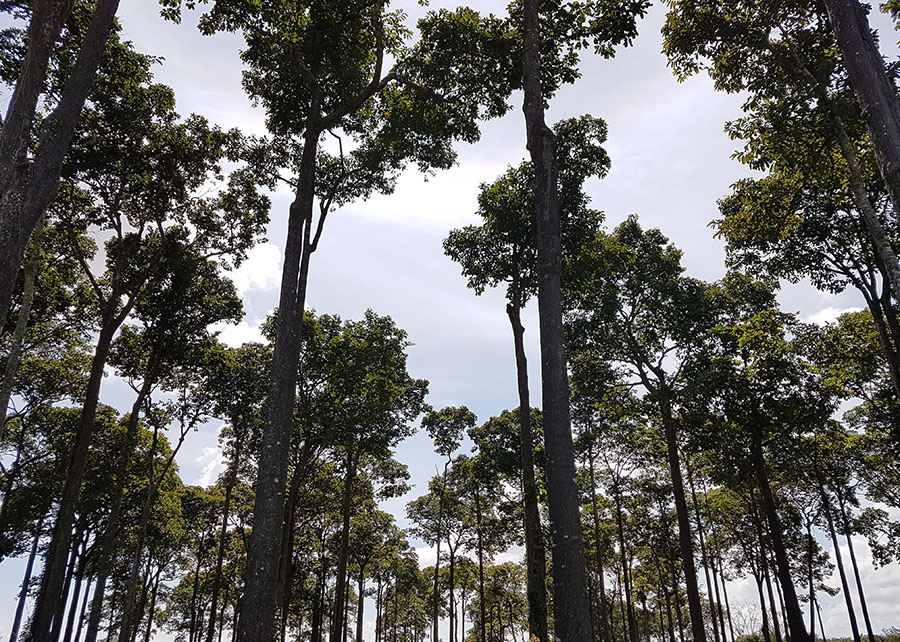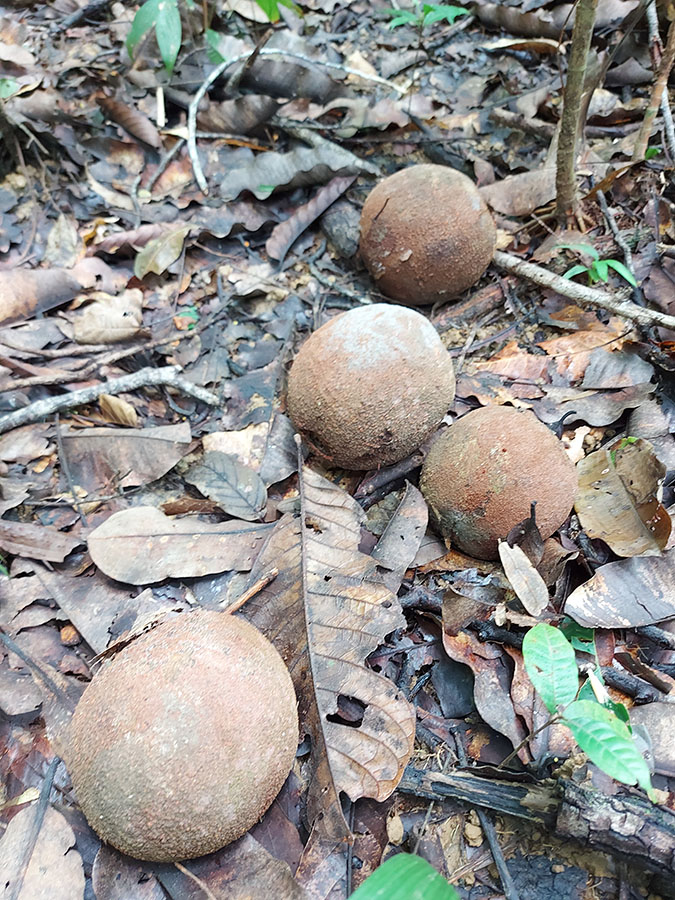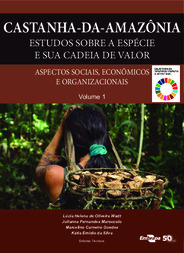Payment for environmental services boosts sustainable development in the Amazon
Payment for environmental services boosts sustainable development in the Amazon
Photo: Renata Silva

Areas with Brazil nut trees represent forests of high value for the bioeconomy, for the conservation of agroextractivist communities, and for ecological stability
|
 Compensation for the environmental services that are provided by the so-called guardians of the Amazon, notably Brazil nut extractivist communities, can be an effective strategy to boost sustainable development and tackle the challenges of climate change and deforestation. This was the conclusion of a group of researchers from Embrapa Environment, Embrapa Amapá and Embrapa Roraima. The results were published in chapter 11 of the book Castanha-da-amazônia: estudos sobre a espécie e sua cadeia de valor: aspectos sociais, econômicos e organizacionais [Brazil nuts: ecology and management of native Brazil nut tree groves], edited by Embrapa Rondônia, which can be downloaded for free.
Compensation for the environmental services that are provided by the so-called guardians of the Amazon, notably Brazil nut extractivist communities, can be an effective strategy to boost sustainable development and tackle the challenges of climate change and deforestation. This was the conclusion of a group of researchers from Embrapa Environment, Embrapa Amapá and Embrapa Roraima. The results were published in chapter 11 of the book Castanha-da-amazônia: estudos sobre a espécie e sua cadeia de valor: aspectos sociais, econômicos e organizacionais [Brazil nuts: ecology and management of native Brazil nut tree groves], edited by Embrapa Rondônia, which can be downloaded for free.
This approach assigns a tangible value to the protection of forests, that is, foragers stand to earn by performing conservation practices in their line of work. The study found that rewarding the preservation and improvement of environmental services encourages sustainable forest management, forest conservation, and responsible forest uses. Such compensation can take place through public policies or private initiatives that encompass environmental, ecological and socioeconomic aspects.
Photo: Marcelino Carneiro Guedes
The Brazil Nut CollectionThe results of the study were part of volume 1 of the book collection Castanha-da-amazônia [Brazil Nut], which was published in 2023 by Embrapa. It was authored by Marcelino Carneiro Guedes, Patrícia da Costa, Carolina Volkmer de Castilho, Richardson Frazão, Sérgio Milheiras, and Walter Paixão de Sousa. |
 The scientists analyzed payments for environmental services (PES) and payments for reducing emissions from deforestation and forest degradation (REDD+) in the Amazon. Both mechanisms offer potential to add value to forests containing Brazil nut trees by bringing additional benefits such as carbon storage, climate regulation, and the achievement of targets established in government programs and international agreements.
The scientists analyzed payments for environmental services (PES) and payments for reducing emissions from deforestation and forest degradation (REDD+) in the Amazon. Both mechanisms offer potential to add value to forests containing Brazil nut trees by bringing additional benefits such as carbon storage, climate regulation, and the achievement of targets established in government programs and international agreements.
Other mechanisms under discussion, such as biodiversity credits, can also add value to Brazil nut groves by helping to recognize the opportunity cost of maintaining these forests. "In addition, strengthening the forest economy and the market for Amazonian products is fundamental to make forest management economically competitive in contrast with deforestation-dependent activities, thus helping to keep forests conserved and standing," Embrapa Environment researcher Patricia da Costa states.
"It is important to observe the market potential for not only traditional products like honey and forest seeds in reforestation, but also the possibility of creating new markets from forest bioresources," Marcelino Guedes, another researcher from Embrapa Amapá, explains.
Areas with Brazil nut trees represent forests of high value for the bioeconomy, for the conservation of agroextractivist communities, and for ecological stability "Therefore, it is essential to recognize the importance of agroextractivism and environmental services provided by nut-reliant families for the conservation of such an invaluable forest," Guedes asserts.
According to the researcher, Brazil nut trees play a crucial role in the conservation of the Amazon. It is present in about 32% of the biome, that is, approximately 2.3 million km². The species is found in woods on solid grounds throughout the Pan-Amazon region, which includes Brazil, Guyana, French Guiana, Suriname, Colombia, Bolivia, Peru, Ecuador, and Venezuela. In addition to its ecological value, the Brazil nut tree significantly contributes to ecosystem processes, such as carbon storage, water cycle, nutrient cycling, and the maintenance of biodiversity.
The study showed that although Brazil nut trees represent only 3% of the individuals in a Brazil nut grove area in the Northern Amazon region, they contribute to 40% of the aboveground live biomass, about half of which is carbon. "The longevity of Brazil nut trees allows this carbon to be stored for a long period, between 300 and 400 years," says Embrapa Roraima researcher Carolina Castilho.
Aside from their ecological value, Brazil nut trees also have socioeconomic and cultural relevance. Therefore, the researchers believe that compensation for environmental services is not only crucial for the conservation of the Amazon Forest, but also promotes the sustainability of communities that depend on Brazil nuts.
Cristina Tordin (MTb 28.499/SP)
Embrapa Environment
Press inquiries
meio-ambiente.imprensa@embrapa.br
Phone number: +55 19 3311-2608
Translation: Mariana Medeiros (13044/DF)
Superintendency of Communications
Further information on the topic
Citizen Attention Service (SAC)
www.embrapa.br/contact-us/sac/

